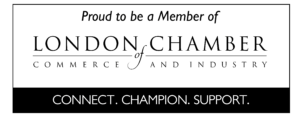Novelty or Familiarity?
As human beings, we are a mass of contradictions. We often seek the new. A new experience, new trend, or even the next new fashion. But we also find immense comfort in the familiar. The comfort of the known.
This dichotomy goes back to our earliest hurter gatherer brains. We are naturally going to gravitate to the familiar as, if it didn’t cause us harm before then we can be pretty sure it will be safe. So we ate plants that we had eaten or seen others eat before. We hunted animals that we had managed to overpower before – and avoided others that we had seen best others. To our brains, familiar equates to ‘good’.
One of the best known psychological theories is the Mere Exposure effect. Sometimes called the Familiarity phenomenon, which states that the mere exposure to any stimulus, over time, will create a bias towards that stimulus.
In other words, we will develop and feel a preference for people or things simply because they are familiar. There are lots of research and papers around this subject but in very simple terms – any new stimulus will tend to be avoided. But if that stimulus is introduced enough then more acceptance occurs, and over time avoidance dissipates. This is even true for the very simplest of organisms.
Just think how many phobias are treated by the gradual and repeated exposure of the sufferer to the object of their phobia. It’s the very basis of the well worn advise to ‘face your fears’.
So, given our conditioning to gravitate to the familiar why do we also find ourselves noticing and attracted to the new?
This is most likely an adaption of our primal brain processing too. To our ancestors, anything new – be it animal, plant, or environment, would automatically catch our attention simply because it is unknown, and therefore, could present a potential danger.
Caution and intrigue would likely act together until the danger had been evaluated. Then the potential of what the new offered would be assessed and a risk and reward equation would quickly follow. Based on past experience, knowing that the hunters had managed to overcome a water buffalo or a yak previously would give them more confidence to try hunting a bison if they encountered one.
But how does this mental hardwiring, embedded deep in our brains, affect how modern humans think today?
Fundamentally, we are still hyper-aware of the new and the unusual. We are ever on the lookout for the new and different. As the potential danger levels have disappeared in everyday life – some of us even seek out the thrill of a new experience – albeit usually still rather sanitised and safe. Dangerous or adrenaline sports are ‘a calculated risk’ – and are often made as safe as possible. The danger of the new is now probably better expressed as the excitement and draw of novelty.
Humans have learnt to seek and like the ‘new’. In the advertising world novelty is king. The most common word used in advertising is ‘new’ but it’s often quickly followed by ‘improved’. So conveying that it’s new and it’s better – but it’s also something that you can trust. You’ve seen this, or something very-much-like-it before, so new and improved appeals to both our needs for novelty and familiarity.
We have all heard the phrase ‘ahead of it’s time’. If we look at the history of product launches there are a good number that failed because the populous was not quite ready for them yet. Although separating that fact from the usually high-cost of new innovations is difficult to quantify.
It is true that in many fields it is often not the first-to-market who ultimately proves to be the market leader. Strange as that fact sounds.
There were several existing mp3 players before the iPod became dominant. Sony was first to develop the home video tape – which became Betamax (and which many claim was the superior product) to the eventual dominance of the market winner, VHS.
History has proven that being first does not translate to market dominance. Especially in the case of new technology. There is a pattern to how new items are adopted. Early adopters are recognised risk-takers. They are prepared to invest more money (as new technology is always expensive) as the benefits of mass production and economies of scale have not yet applied.
Once enough ‘early adopters’ have tested and proven the product then the ‘early majority’ will take up the product (usually as cost start to fall also). Followed by the late majority and then finally, the laggards.
But even in our need for novelty, familiarity still plays a part. The biggest grossing films of the last decade have predominantly been sequals, revisions and franchises. We know that the story we will be served will be new, but is set in a familiar world and comes from a familiar and trusted source. The players, partners and formulars used are familar to us.
As anyone who has even a passing knowledge of storytelling is aware, the hero’s journey is the foundation of most books and films. It’s a construct we know and understand. The specific details of the story may alter but there is a formula that we feel comfortable with. These films present the best possible combination of novelty and familiarity.
In music we tend to lean towards certain genres and arguably chord sequences and sounds that we have previous exposure to. When Spotify launched its Discover Weekly app it originally had a bug. Discover Weekly is designer to present the users with 30 completely new songs and artists every Monday. But a glitch in the programming meant that some familiar artists and tracks sometimes slipped through to the weekly song choice.
Spotify’s coders quickly created a fix for the glitch. But they then soon noticed that audience engagement with the app had plummeted once the fix was applied. Having some familiarity within the novelty was clearly better for engagement – and therefore served their ultimate aim of introducing new music to their users.
What we can learn from these examples is that to promote the new we need to build on the familiar.
In the industrial design world there is a formula known as the Maya principal.
MAYA = Most Advanced. Yet Acceptable.
MAYA was coined by Raymond Loewy (1893-1986). Often referred to as the father of Industrial Design, Loewy has an impressive resume covering planes, trains, automobiles, motorbikes and NASA, homewares, cookware and many others.
Although most recognised as an industrial designers his designs for The Air Force One logo, the Coca-Cola bottle, the Shell Oil logo, the Exxon logo, the US Postal Service logo, the Greyhound logo are just some of his creations which are still in use today.
The MAYA principal has been alternatively expressed as: Design for the future, balanced with your users’ present. In other words, build towards something new from a place people understand and feel relatively comfortable.
For brand and communication professionals the lessons to be drawn are logical. Taking the audience on a journey, educating and leading them will be far more effective than confronting them with huge leaps into unfamiliar territory. Novelty and creativity will be welcomed by your audience – but will be most effective when counter-balanced and rooted in the known and familiar.
Progress is generally defined and measured in small, incremental steps. It’s as true a statement in the world of design and communications as it is in life generally








Leave a Reply
Want to join the discussion?Feel free to contribute!